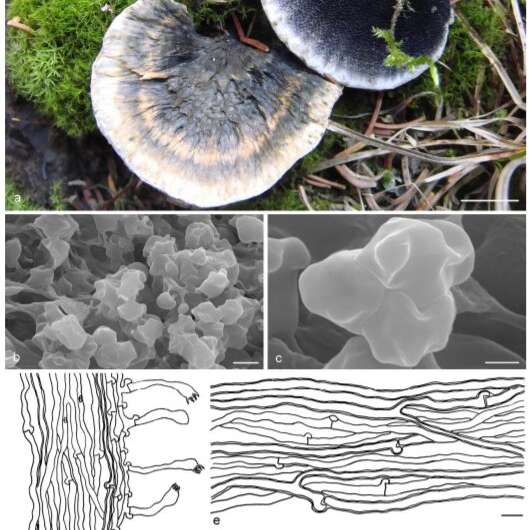Study of endangered Stipitate hydnaceous fungi in China

The genus Hydnellum, an important component of stipitate hydnaceous fungi, is a group of soil-inhabiting Basidiomycota with a spinulose hymenium. They can form a mutually beneficial symbiosis with plant roots, receiving carbon sources from and transporting mineral elements, such as nitrogen and phosphorus to their host plants, which occupies a vital position in the formation and rapid colonization of host plant resistance, promotion of forest vegetation restoration and forest ecosystem stability.
In recent decades, due to global climate change, nitrogen deposition, soil acidification, habitat loss and other factors, the species diversity and fruiting bodies abundance of Hydnellum has shown a significant downward trend, and many species are listed as endangered species.
Dr. Yuan Haisheng and his team from the Institute of Applied Ecology (IAE) of the Chinese Academy of Sciences conducted a systematic study on Hydnellum in China. Combined with morphology, microscopy and multi-gene phylogeny, they constructed a phylogenetic tree with the Maximum Likelihood and Bayesian, and most branches obtained a high support rate.
The researchers clarified the phylogenetic status of Hydnellum in the Thelephorales. And based on the hyphal-septa type and phylogenetic support, the genus hierarchical classification system was established and the morphological characteristics of each subgenus were defined.
In this study, 29 fungal taxa were published, including 10 subgenera (Hydnellum, Caesispinosum, Croceum, Inflatum, Rhizomorphum, Scabrosum, Spongiosum, Subindufibulatum, Violaceum, Zonatum), 11 new species (Hydnellum atrorubrum, H. atrospinosum, H. bomiense, H. brunneorubrum, H. fibulatum, H. granulosum, H. inflatum, H. rubidofuscum, H. squamulosum, H. sulcatum and H. yunnanense), three new recorded species (H. caeruleum, H. peckii and H. spongiosipes) and five potential new species.
The research fills the gap of Hydnellum in China and explicates the species diversity of Hydnellum. It provides baseline data for the further evaluation, protection and host plant selection mechanisms of these fungi.
The study, titled "Multi-gene phylogeny and taxonomy of Hydnellum (Bankeraceae, Basidiomycota) from China," has been published in the Journal of Fungi.
More information: Yan-Hong Mu et al, Multi-Gene Phylogeny and Taxonomy of Hydnellum (Bankeraceae, Basidiomycota) from China, Journal of Fungi (2021). DOI: 10.3390/jof7100818
Provided by Chinese Academy of Sciences



















